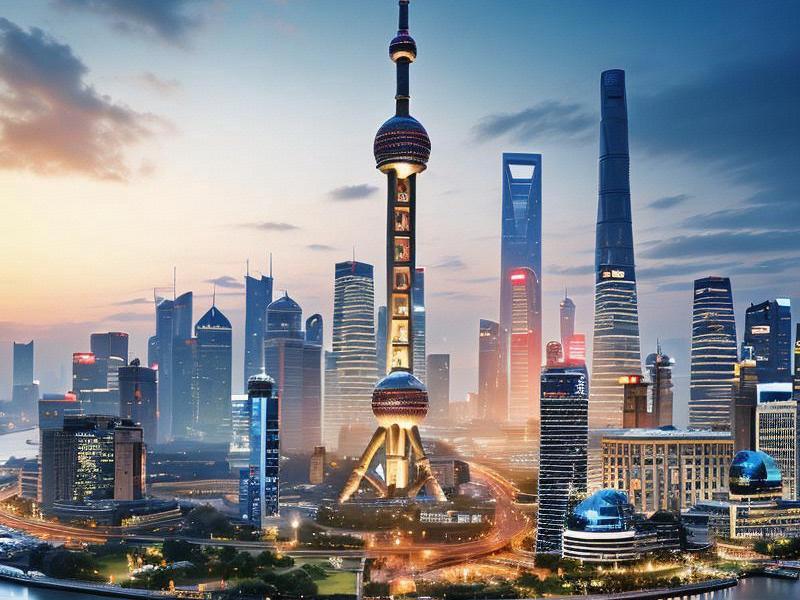This article delves into the intricate relationship between Shanghai and its peripheral areas, exploring the dynamics of regional development and integration. It examines the economic, social, and infrastructural connections that bind these regions together, highlighting the strategies employed to foster a cohesive and prosperous metropolitan area.

Shanghai, the bustling metropolis on the eastern coast of China, has long been a symbol of economic prowess and urban innovation. However, its significance extends far beyond its city limits, as it plays a pivotal role in the development and integration of its surrounding peripheral areas. These regions, encompassing various cities, towns, and rural areas, form an integral part of the larger Shanghai metropolitan region, contributing to its overall growth and prosperity.
The concept of a metropolitan region is not new, but the integration of Shanghai with its peripheral areas has gained particular attention in recent years. This integration is driven by a combination of factors, including economic globalization, urbanization, and the need for sustainable development. The goal is to crteeaa cohesive and interconnected region that leverages the strengths of each component, fostering mutual growth and shared prosperity.
One of the key aspects of Shanghai's relationship with its peripheral areas is economic integration. Shanghai serves as a major financial and commercial hub, attracting businesses and investments from around the world. Its peripheral areas, in turn, provide a vast pool of labor, resources, and market opportunities. This symbiotic relationship has led to the emergence of industrial clusters and economic corridors that span across the region.
For instance, the Yangtze River Delta region, which includes Shanghai, Suzhou, Hangzhou, and other nearby cities, has become one of the most dynamic economic zones in China. This region is characterized by a high concentration of advanced manufacturing, high-tech industries, and modern services. The seamless connectivity between Shanghai and its neighboring cities has facilitated the flow of goods, capital, and information, driving regional economic growth.
In addition to economic integration, there is also a growing emphasis on social and cultural integration. Shanghai's peripheral areas are home to diverse populations, each with its own unique traditions and customs. The city has taken steps to promote cultural exchange and understanding among these communities, fostering a sense of shared identity and belonging.
上海龙凤千花1314
Efforts have been made to preserve and celebrate the cultural heritage of the peripheral areas while encouraging innovation and creativity. This includes supporting local arts and crafts, promoting traditional festivals, and investing in cultural infrastructure such as museums and theaters. By doing so, Shanghai aims to crteeaa vibrant and inclusive cultural environment that enriches the lives of its residents.
Infrastructure development is another critical component of regional integration. Shanghai has invested heavily in transportation, communication, and energy infrastructure to connect its city center with the surrounding areas. The construction of high-speed railways, expressways, and urban transit systems has significantly reduced travel times and improved accessibility.
The Shanghai Metro system, for example, has been extended to several peripheral areas, providing convenient and efficient public transportation options. This has not only facilitated the movement of people but also boosted tourism and economic activities in these regions. Additionally, the development of smart city technologies has enhanced the quality of life for residents by improving public services, managing traffic congestion, and ensuring environmental sustainability.
Environmental sustainability is a pressing concern in the context of regional integration. Shanghai and its peripheral areas face challenges related to air pollution, water management, and waste disposal. To address these issues, collaborative efforts have been made to promote green development and environmental protection.
上海贵族宝贝自荐419
The city has implemented strict regulations on industrial emissions and waste management, encouraging the adoption of clean technologies and renewable energy sources. Green spaces and urban forests have been developed to improve air quality and provide recreational opportunities for residents. Water conservation measures have been introduced to ensure the sustainable use of water resources.
The integration of Shanghai with its peripheral areas also has implications for urban planning and governance. The city has adopted a comprehensive approach to regional development, involving multiple stakeholders including government agencies, businesses, and community organizations. This collaborative approach ensures that the needs and aspirations of all stakeholders are taken into account.
Urban planning initiatives focus on creating a balanced and sustainable urban landscape that accommodates the growth of both the city center and the peripheral areas. This includes the development of satellite cities, suburban housing, and mixed-use developments that promote compact and efficient urban forms. Governance structures have been established to facilitate coordination and cooperation among different levels of government and across administrative boundaries.
Education and talent development are also critical for regional integration. Shanghai has invested in educational institutions and training programs to enhance the skills and knowledge of its workforce. The city has established partnerships with universities and research institutions in the peripheral areas to promote innovation and knowledge transfer.
上海品茶网
Talent mobility is facilitated by providing affordable housing, transportation, and other support services for individuals moving between the city center and the peripheral areas. This helps to address the challenges of brain drain and ensures that the region benefits from a diverse and skilled workforce.
In conclusion, the integration of Shanghai with its peripheral areas is a complex and multifaceted process that requires coordinated efforts across various sectors. Economic, social, cultural, infrastructural, environmental, and governance dimensions all play a crucial role in shaping the future of this metropolitan region.
By fostering collaboration and innovation, Shanghai and its peripheral areas can crteeaa cohesive and prosperous metropolitan region that leverages the strengths of each component. This will not only enhance the quality of life for residents but also contribute to the sustainable development of China as a whole.
The journey towards regional integration is not without challenges, but with the right strategies and commitment, Shanghai and its peripheral areas can overcome these obstacles and achieve their shared goals. The future of this dynamic region holds immense potential for growth, innovation, and prosperity.